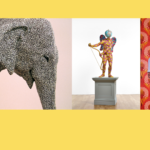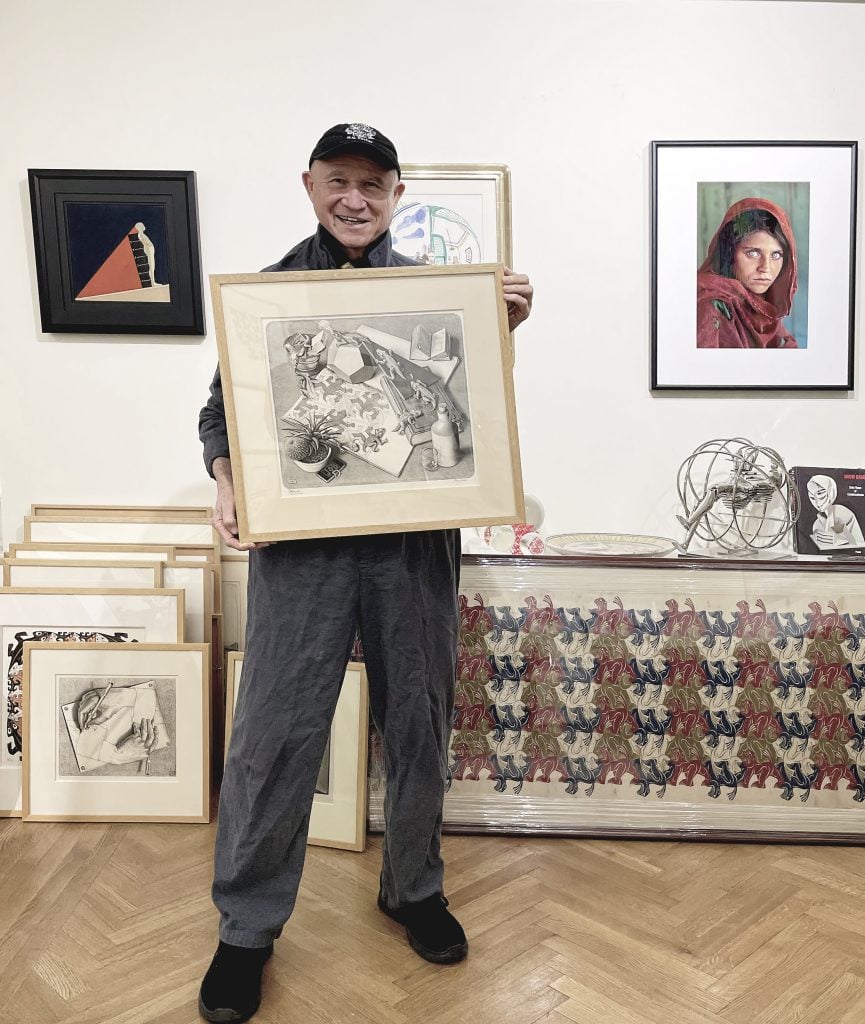RUINER III
2020 - Sculpture (Sculpture)
86 x 94 x 48 cm
Nikita Gale
RUINER III by Nikita Gale is part of an on-going numbered series of abstract sculptures in which various ancillary materials necessary for sound production and recording such as towels, foam, and audio cables, are riddled around piping resembling crowd control bollards, lighting trusses, and other like stage architecture. While these muscular works evoke the forms and dynamism of mid-century modernism, they can also be seen as a translation of Goethe’s idea that “architecture is frozen music”. RUINER III is exemplary of how the artist’s disembodied sets typically evoke a sense of longing through absence, and in so doing, draw out an extended mediation on how audiences project mental or emotional energy onto a person, object, or idea. Likewise, the lost subject in the centre of Gale’s dramas spur viewers to wonder why these actors have left the stage. On a primary level, these distancing techniques allow Gale to lay bare how scenography constructs a state of mind, or in the artist’s own words how “desire is data”. Instead of showcasing a performer or their performance directly, Gale characteristically prefers to imply the spectacle of these productions through their generally unrecognized, yet necessary infrastructure. In doing so, the artists attempt to highlight all of the labor and other forms of support that are often left in the margins of the culture industry. As a form of counterpoint, the series use of DIY aesthetics over the pop entertainment sector’s polish, winks not only to the idea that anyone has access to culture, but that the mainstream itself is a contrivance.
Colors:
Related works sharing similar palette

© » KADIST
Christopher Badger
2011Drowned Wood Standing Coiled (2011) consists of two sculptures, inextricably linked...

© » KADIST
Fabiola Torres-Alzaga
2013Fabiola Torres-Alzaga plays with magic, illusion, and sleight-of-hand, fabricating installations, drawings, and films that toy with our perceptions...

© » KADIST
Humberto Diaz
2002The two works in the Kadist collection, Observador Pasivo and 3600 besos por hora by Diaz are culled from a vast compilation of videos and performances for the camera...

© » KADIST
Yuki Kimura
2012Kastura (2012) is an installation consisting of 24 black-and-white photographs of the Katsura Imperial Villa in Kyoto bequeathed by Kimura’s grandfather; free-standing structures on which they are hung; and ornamental plants...

© » KADIST
Loris Gréaud
2004This work refers to the “Dream Machines”, an experimental object invented by the painter and writer Brion Gysin and the scientist Ian Sommerville, and which is composed of a light bulb with light passing through slits in a rotating cylinder...

© » KADIST
Felipe Arturo
2012Primero estaba el mar ( First Was the Sea , 2012) is a system of equivalences between syllables and silhouettes of waveforms cast in cement...

© » KADIST
Colter Jacobsen
2007Victory at Sea is a simple mechanism made from cardboard and found materials that mimics the Phenakistoscope, an early cinematic apparatus...

© » KADIST
Laura Huertas Millán
2016La libertad is a “greca” film, a meander film, with no beginning nor end, weaving together fragments of daily life at the Navarro´s, counting threads and time, wondering and wandering around words as emancipation, labor, and freedom (la libertad), the word that most appeared in our conversations...

© » KADIST
Adrien Missika
2013Adrien Missika follows in the footsteps of the Brazilian landscape architect and artist Roberto Burle Marx (1909-1994), a designer of gardens, parks and promenades who introduced modern landscape architecture to Brazil...

© » ARTS EQUATOR
In a Material World: IMPART Collectors’ Show 2020 & Justice for All | ArtsEquator Thinking and Talking about Arts and Culture in Southeast Asia ArtsEquator Viewpoints Courtesy of artists January 3, 2020 By Aditi Shivaramakrishnan (1,200 words, 5-minute read) When it comes to analysing an artwork, the artist’s choice of materials can be as revelatory as other elements in suggesting what they might wish to communicate...

© » KADIST
Yuji Agematsu
2015Each day, Yuji Agematsu smokes a pack of cigarettes and wanders the streets of New York City looking for trash...

© » ARTS EQUATOR
Weekly Picks: Malaysia (16 – 22 July 2018) | ArtsEquator Thinking and Talking about Arts and Culture in Southeast Asia Malaysia July 16, 2018 Hua (華) Settler Imaginary in Borneo , at Malaysia Design Archive, 19 July 8pm Academic Dr Zhou Hau Liew presents ‘ Preliminary Thoughts on the Hua Settler Imaginary in Borneo: Cultural Mapping, Revolutionary Communism, and the Ideas of Chineseness ’...






:quality(70)/cloudfront-eu-central-1.images.arcpublishing.com/thenational/3WYM5PKXHWASWGOE63KE5FXY5E.jpg)

